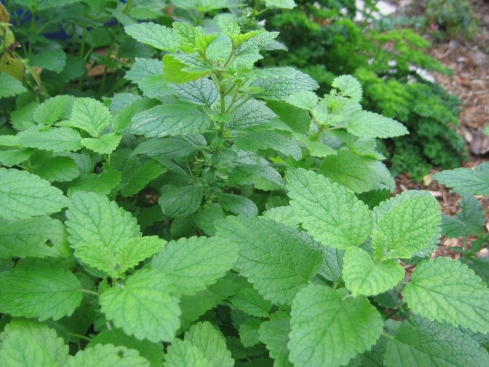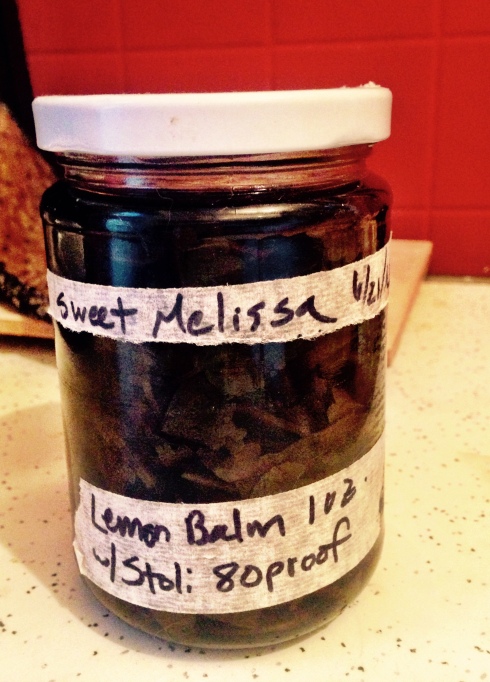About a year ago, I wrote a post on Carmelite water, an herb-infused spirit that has many variations, but who’s defining herb is lemon balm. Lemon balm is also known as sweet melissa. My first crack at Carmelite water resulted in a spicy brew where I tasted much more clove than lemon balm. The clove had a numbing effect on my tongue as I drank it– clove oil is known as a good herbal remedy for tooth aches, as it is both antiseptic and analgesic.

Alas, I don’t have a personal photo of my own lemon balm. Here’s a public domain shot via wikimedia commons.
Lemon balm, or Melissa officialis, is a perennial herb. It’s calming, cooling, uplifting, and mildly astringent. Used in formulas for belly aches, anxiety, hyperthyroid, colds and viruses. (source: Dina Falconi’s Foraging and Feasting: a Field Guid and Wild Food Cookbook.) Lemon balm is also a great ally in the garden. Its lemony scent is supposed to repel various pests.
For my second try at a Carmelite water, I decided to go with the fresh herb, and only melissa: no other herbs to distract the taste buds. In the herbalists’ terms, a one-herb infusion is called a “simple.” Last summer, I planted a lemon balm that flourished in the high sun of my fire escape. In June, I took an ounce of the leaves and put them in a jar, and I covered them with about 1 1/4 cups of 80 proof Stoli vodka. Then, I forgot about it. Here it is:
Today, over six months later, I rediscovered the jar in the back of my fermentation cabinet. I decanted the vodka into a glass measuring cup, squeezed out the extra fluid from the leaves, and then tasted some. The taste is decidedly herbaceous, decidedly the taste of lemon balm, and of course strongly alcoholic. The alcohol has quite a bite to it. Last time I made carmelite water, I skipped the part where you add sugar to the mix. This time around, I heated up a tablespoon of water, added two tablespoons of honey to it, and mixed that into my brew. This softened the taste, but it is still sure to put some hair on your chest! Interestingly, I just found a recipe for lemon balm schnapps, apparently a Danish recipe. The author only infuses hers for 48 hours and uses significantly less lemon balm. I supposed my version is really more like a tincture in its herbal strength.

The infused alcohol is a deep emerald green, although the lighting doesn’t quite tell you that here.
I would call this experiment a success, although I’ve come to the conclusion that I like the way fresh lemon balm leaves smell way more than I like the way they taste. I would call picking a fresh leaf from my homegrown plant and smelling the aroma of it crushed between my fingers a kind of ‘peak experience.’ Eating that same leaf or drinking it in vodka hasn’t done it for me. Perhaps using my original recipe and reducing the clove will create a more balanced blend that incorporates the taste of sweet melissa but makes it more delicious than this simpler’s recipe. I’d like to call out to my readers: do you have a favorite use for lemon balm?






